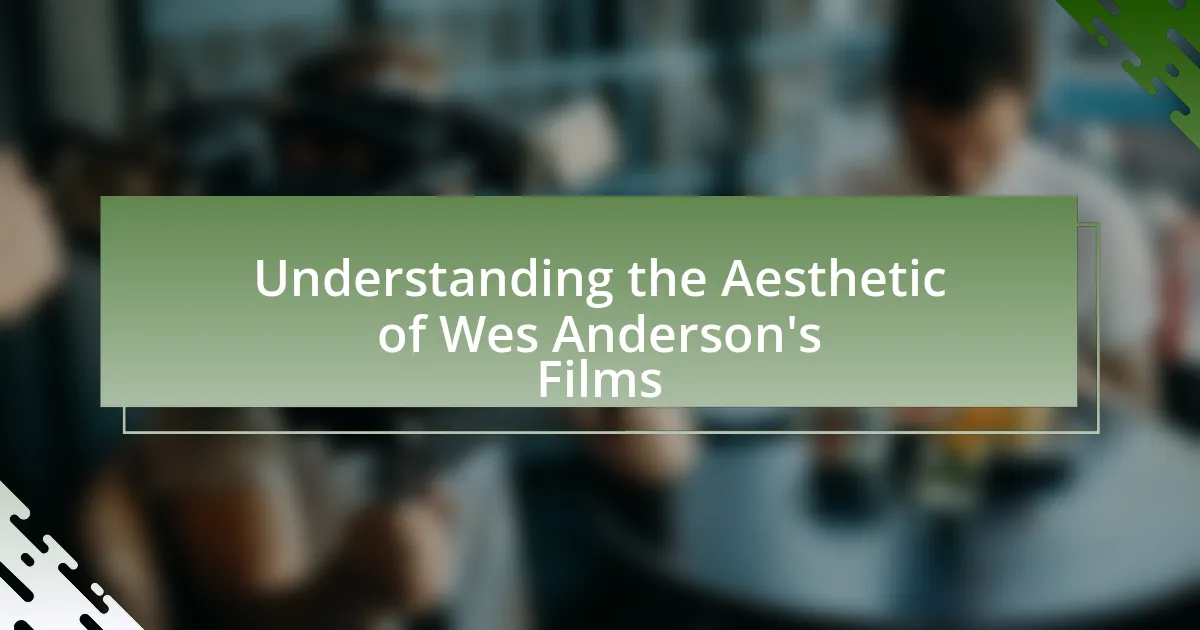The article examines the significance of social commentary in Jordan Peele’s films, particularly focusing on how they address systemic racism and societal issues through horror and satire. It highlights key themes such as racial identity, privilege, and class disparity, as seen in films like “Get Out” and “Us.” The discussion includes Peele’s narrative techniques, including allegory, satire, and visual symbolism, which enhance the exploration of complex social issues. Additionally, the article emphasizes the role of humor and cinematography in conveying social messages, encouraging audiences to engage in critical discussions about race, identity, and inequality.
What is the significance of social commentary in Jordan Peele’s films?
The significance of social commentary in Jordan Peele’s films lies in their ability to address and critique systemic racism and societal issues through the lens of horror and satire. Peele’s films, such as “Get Out” and “Us,” utilize genre conventions to explore themes of identity, privilege, and the African American experience, making complex social issues accessible to a broader audience. For instance, “Get Out” specifically highlights the microaggressions and exploitation faced by Black individuals in predominantly white spaces, reflecting real societal dynamics. This approach not only entertains but also provokes critical discussions about race and culture, demonstrating the power of film as a medium for social critique.
How does Jordan Peele incorporate social issues into his storytelling?
Jordan Peele incorporates social issues into his storytelling by using horror as a lens to explore themes of race, identity, and societal fears. His films, such as “Get Out” and “Us,” serve as allegories for systemic racism and class struggles, effectively highlighting the psychological and social implications of these issues. For instance, “Get Out” critiques cultural appropriation and the commodification of Black bodies, while “Us” addresses class disparity and the duality of human nature. These narratives are reinforced by Peele’s use of symbolism and character development, which provide a deeper understanding of the societal critiques embedded in his work.
What themes are prevalent in Peele’s films regarding race and identity?
Peele’s films prominently explore themes of racial identity, systemic racism, and the duality of black experiences in America. In “Get Out,” the narrative critiques cultural appropriation and the commodification of black bodies, illustrating how white society often seeks to exploit black identity for its own gain. “Us” delves into the concept of the “other,” reflecting on class disparities and the internalized struggles of identity within marginalized communities. Additionally, Peele’s work often employs horror as a lens to confront uncomfortable truths about race relations, making the audience grapple with the realities of prejudice and identity politics. These themes are reinforced by Peele’s use of symbolism and social commentary, which resonate with contemporary discussions on race and identity in America.
How do societal norms influence the narratives in his films?
Societal norms significantly influence the narratives in Jordan Peele’s films by shaping the themes of race, identity, and social justice. For instance, in “Get Out,” Peele critiques the liberal white gaze and the commodification of Black identity, reflecting societal anxieties surrounding race relations in contemporary America. This is evidenced by the film’s portrayal of microaggressions and the concept of “cultural appropriation,” which resonate with ongoing discussions about racial dynamics in society. Similarly, “Us” explores themes of class division and the duality of identity, mirroring societal fears about inequality and the “other.” These narratives are deeply rooted in the societal context, making Peele’s films a reflection of current social issues and norms.
Why is social commentary important in contemporary cinema?
Social commentary is important in contemporary cinema because it reflects and critiques societal issues, fostering awareness and dialogue among audiences. Films that incorporate social commentary, such as those by Jordan Peele, often address themes like race, identity, and systemic inequality, prompting viewers to confront uncomfortable truths. For instance, Peele’s “Get Out” explores racial tensions and the commodification of Black bodies, which resonates with ongoing discussions about racism in America. This relevance not only enhances the narrative depth of films but also encourages critical thinking and social engagement among viewers, making cinema a powerful medium for societal reflection and change.
How does social commentary enhance audience engagement?
Social commentary enhances audience engagement by prompting viewers to reflect on societal issues and personal experiences. In Jordan Peele’s films, such as “Get Out” and “Us,” the incorporation of social commentary addresses themes like racism and identity, which resonate deeply with audiences. This connection fosters a sense of relevance and urgency, encouraging viewers to engage more critically with the narrative. Research indicates that films with strong social themes can lead to increased emotional investment, as audiences relate their own lives to the depicted struggles, thereby enhancing overall engagement.
What role does social commentary play in shaping cultural discourse?
Social commentary plays a crucial role in shaping cultural discourse by providing critical insights into societal issues and prompting public dialogue. In the context of Jordan Peele’s films, such as “Get Out” and “Us,” social commentary addresses themes of race, identity, and systemic oppression, effectively challenging viewers to confront uncomfortable truths about society. For instance, “Get Out” uses horror to explore racial dynamics and the concept of cultural appropriation, leading to widespread discussions about racism in America. This engagement not only reflects societal anxieties but also influences cultural narratives, encouraging audiences to reflect on their beliefs and behaviors.

How do specific films by Jordan Peele reflect social commentary?
Jordan Peele’s films, particularly “Get Out” and “Us,” reflect social commentary by addressing systemic racism and class struggles. In “Get Out,” the narrative explores the exploitation of Black bodies and the insidious nature of liberal racism, exemplified through the character of Chris, who faces microaggressions and ultimately a horrifying fate at the hands of a white family. This film critiques the superficiality of racial progress in America, highlighting how racism persists beneath the surface. In “Us,” Peele delves into themes of class division and identity, presenting a doppelgänger narrative that symbolizes the societal neglect of marginalized communities. The film illustrates how the oppressed can become oppressors, emphasizing the consequences of societal inequality. Both films utilize horror elements to provoke discussions about race and class, making them poignant social commentaries.
What social issues are addressed in “Get Out”?
“Get Out” addresses several social issues, primarily focusing on racism, cultural appropriation, and the exploitation of Black bodies. The film critiques systemic racism by illustrating how white characters manipulate and dehumanize Black individuals, exemplified through the sinister auction scene where Black bodies are commodified. Additionally, it highlights the concept of “liberal racism,” where ostensibly progressive white characters exhibit microaggressions and performative allyship, revealing the insidious nature of racism that persists even in seemingly tolerant environments. The film’s portrayal of these issues serves as a commentary on the complexities of race relations in contemporary society.
How does “Get Out” portray the concept of cultural appropriation?
“Get Out” portrays the concept of cultural appropriation through its depiction of white characters who exploit Black culture for personal gain while simultaneously dehumanizing Black individuals. The film illustrates this through the character of Chris, who becomes a victim of a sinister scheme where his body is appropriated by white individuals seeking to gain the perceived advantages of Black physicality. This is exemplified in the auction scene, where Chris’s body is commodified, highlighting the exploitation inherent in cultural appropriation. Additionally, the film critiques the superficial admiration of Black culture by white characters, who fail to recognize the systemic racism and violence that underlie their actions. This commentary is reinforced by the character of Missy, who uses hypnosis as a means of control, symbolizing the manipulation and appropriation of Black identity without understanding or respecting its significance.
What commentary does “Get Out” provide on systemic racism?
“Get Out” provides a critical commentary on systemic racism by illustrating how it manifests in seemingly benign social interactions and relationships. The film portrays a white family that exploits Black individuals, highlighting the insidious nature of racism that exists beneath the surface of liberalism and progressivism. This is exemplified through the character of Chris, who experiences microaggressions and ultimately faces a horrific form of exploitation, symbolizing how systemic racism can dehumanize and commodify Black bodies. The film’s climax, where Chris fights against his captors, serves as a metaphor for the struggle against systemic oppression, emphasizing the need for awareness and resistance against such societal structures.
What themes are explored in “Us” regarding class and privilege?
The film “Us” explores themes of class and privilege through the stark contrast between the affluent family, the Wilsons, and their doppelgängers, the Tethered, who represent the oppressed underclass. This duality highlights the disparities in access to resources, safety, and societal acceptance, illustrating how privilege can create a false sense of security. The Tethered’s existence in the shadows of society serves as a metaphor for those marginalized and ignored, emphasizing the consequences of systemic inequality. The film critiques the notion of the American Dream, suggesting that it is often unattainable for those born into disadvantage, thereby reinforcing the social commentary on class divisions and the privileges that come with wealth.
How does “Us” use duality to comment on societal divisions?
“Us” employs duality through the stark contrast between the Tethered and their surface counterparts to illustrate societal divisions. The film presents the Tethered as a reflection of the oppressed, living in the shadows of their privileged counterparts, symbolizing the marginalized groups in society. This duality highlights issues of class disparity, identity, and the struggle for recognition, as the Tethered seek to break free from their subjugated existence. The film’s climax, where the Tethered confront their doppelgängers, serves as a metaphor for the societal reckoning that occurs when the oppressed rise against systemic inequalities. This commentary is reinforced by the film’s setting in a seemingly idyllic suburban environment, which contrasts sharply with the dark realities faced by the Tethered, emphasizing the hidden divisions within society.
What implications does “Us” have for understanding the American Dream?
“Us” critiques the American Dream by illustrating the stark divide between the privileged and the marginalized, emphasizing that the Dream is often unattainable for many. The film presents a duality of existence, where the doppelgängers symbolize the suppressed underclass that exists beneath the surface of American society. This representation highlights systemic inequalities and the notion that the American Dream is built on the exploitation of others. The film’s portrayal of the Tethered, who live in underground conditions while their counterparts enjoy a life of comfort, serves as a metaphor for the hidden struggles faced by those who are disenfranchised. This stark contrast reinforces the idea that the American Dream is not universally accessible, revealing the darker realities of social stratification and the consequences of neglecting those who are left behind.

What techniques does Jordan Peele use to convey social commentary?
Jordan Peele employs various techniques to convey social commentary, including allegory, satire, and visual symbolism. In his films, such as “Get Out” and “Us,” he uses allegory to represent racial tensions and societal issues, allowing audiences to engage with complex themes through a horror framework. For instance, “Get Out” critiques systemic racism by depicting the exploitation of Black bodies, while “Us” explores class division and identity through the doppelgänger motif. Additionally, Peele’s use of satire highlights societal absurdities, making serious topics more accessible and thought-provoking. Visual symbolism, such as the use of color and imagery, further enhances the thematic depth, inviting viewers to interpret underlying messages about race, class, and identity.
How does humor play a role in Peele’s social critique?
Humor serves as a critical tool in Jordan Peele’s social critique by allowing him to address complex and often uncomfortable societal issues in an accessible manner. Through satire and comedic elements, Peele highlights themes such as racism, identity, and social inequality, making them more relatable to audiences. For instance, in “Get Out,” the use of dark humor juxtaposes horror with comedic moments, effectively critiquing the absurdity of racial stereotypes and microaggressions. This blend of humor and horror not only entertains but also provokes thought, encouraging viewers to reflect on the underlying social commentary. By employing humor, Peele successfully engages a wider audience, facilitating discussions around serious topics while maintaining an entertaining narrative.
What examples illustrate the use of satire in his films?
Jordan Peele’s films, particularly “Get Out” and “Us,” illustrate the use of satire through their critique of racial and social issues. In “Get Out,” the satire is evident in the portrayal of liberal white characters who exhibit a superficial understanding of race, highlighting the absurdity of their well-meaning but ultimately harmful attitudes. The film uses horror elements to satirize the commodification of Black bodies and the fetishization of Black culture. In “Us,” the satire emerges through the depiction of class disparity and the concept of the “American Dream,” where the doppelgängers represent the repressed underclass, critiquing societal neglect and the hypocrisy of privilege. These examples demonstrate how Peele employs satire to provoke thought and discussion on serious social issues.
How does Peele balance horror and humor to deliver messages?
Jordan Peele balances horror and humor to deliver messages by intertwining comedic elements with unsettling themes, creating a unique narrative experience that engages audiences while provoking thought. For instance, in “Get Out,” Peele uses humor to disarm viewers before revealing the horror of racial exploitation, allowing for a deeper exploration of social issues. This technique is evident in the character of Rod, whose comedic relief contrasts sharply with the film’s darker moments, highlighting the absurdity of the situations faced by the protagonist. By blending these genres, Peele effectively communicates complex social commentary, making the horror more impactful and the humor more resonant.
What visual and narrative techniques enhance his social commentary?
Jordan Peele employs visual and narrative techniques such as symbolism, juxtaposition, and non-linear storytelling to enhance his social commentary. Symbolism is evident in the use of objects and imagery that represent broader societal issues, such as the use of the tethered in “Us” to symbolize class division and identity struggles. Juxtaposition is utilized to contrast different social realities, effectively highlighting disparities, as seen in “Get Out,” where the serene suburban setting contrasts with the underlying horror of racial exploitation. Non-linear storytelling allows for a deeper exploration of themes, as it encourages viewers to piece together the narrative and reflect on the implications of systemic racism and societal norms. These techniques collectively reinforce Peele’s critique of contemporary social issues, making his commentary both impactful and thought-provoking.
How does symbolism contribute to the themes in Peele’s films?
Symbolism in Jordan Peele’s films significantly enhances the exploration of themes such as identity, race, and societal fears. For instance, in “Get Out,” the use of the sunken place symbolizes the marginalization and silencing of Black voices within a predominantly white society. This visual metaphor underscores the theme of systemic racism and the psychological impact it has on individuals. Similarly, in “Us,” the doppelgängers represent the duality of human nature and the societal divide between privilege and oppression, reinforcing themes of class struggle and identity. These symbols serve as critical tools that deepen the audience’s understanding of the complex social commentaries Peele weaves throughout his narratives.
What role does cinematography play in conveying social messages?
Cinematography plays a crucial role in conveying social messages by visually representing themes and emotions that resonate with societal issues. Through techniques such as framing, lighting, and camera movement, cinematographers can emphasize specific elements that highlight social commentary. For instance, in Jordan Peele’s films, the use of close-ups can intensify the emotional impact of a character’s experience, while contrasting lighting can symbolize the duality of societal norms. This visual storytelling effectively engages the audience, prompting them to reflect on the underlying social messages. Research indicates that visual elements in film significantly influence audience perception and emotional response, reinforcing the idea that cinematography is a powerful tool for social commentary.
What can audiences learn from the social commentary in Jordan Peele’s films?
Audiences can learn about systemic racism, identity, and societal fears from the social commentary in Jordan Peele’s films. His works, such as “Get Out” and “Us,” utilize horror to explore the complexities of race relations and the psychological impact of oppression. For instance, “Get Out” highlights the microaggressions and exploitation faced by Black individuals in predominantly white spaces, illustrating the insidious nature of racism. Additionally, “Us” delves into themes of class disparity and the duality of human nature, prompting viewers to reflect on societal divisions. These films serve as a mirror to contemporary social issues, encouraging critical discussions about race, identity, and the human experience.
How can viewers apply insights from Peele’s films to real-world issues?
Viewers can apply insights from Peele’s films to real-world issues by recognizing and analyzing the social commentary embedded in his narratives. For instance, “Get Out” addresses systemic racism and the commodification of Black bodies, prompting discussions about racial dynamics and privilege in society. Similarly, “Us” explores themes of class struggle and identity, encouraging viewers to reflect on societal divisions and the impact of socioeconomic status. These films serve as mirrors to contemporary societal issues, urging audiences to confront uncomfortable truths and engage in critical conversations about race, identity, and inequality.
What discussions can Peele’s films inspire among audiences?
Peele’s films can inspire discussions about race, identity, and societal norms. His works, such as “Get Out” and “Us,” delve into the complexities of racial dynamics and the psychological impact of systemic oppression. For instance, “Get Out” critiques cultural appropriation and the commodification of Black bodies, prompting audiences to reflect on their own experiences and societal structures. Additionally, “Us” explores themes of duality and class division, encouraging conversations about privilege and the societal implications of inequality. These films serve as catalysts for dialogue on contemporary social issues, making them relevant and thought-provoking for diverse audiences.




